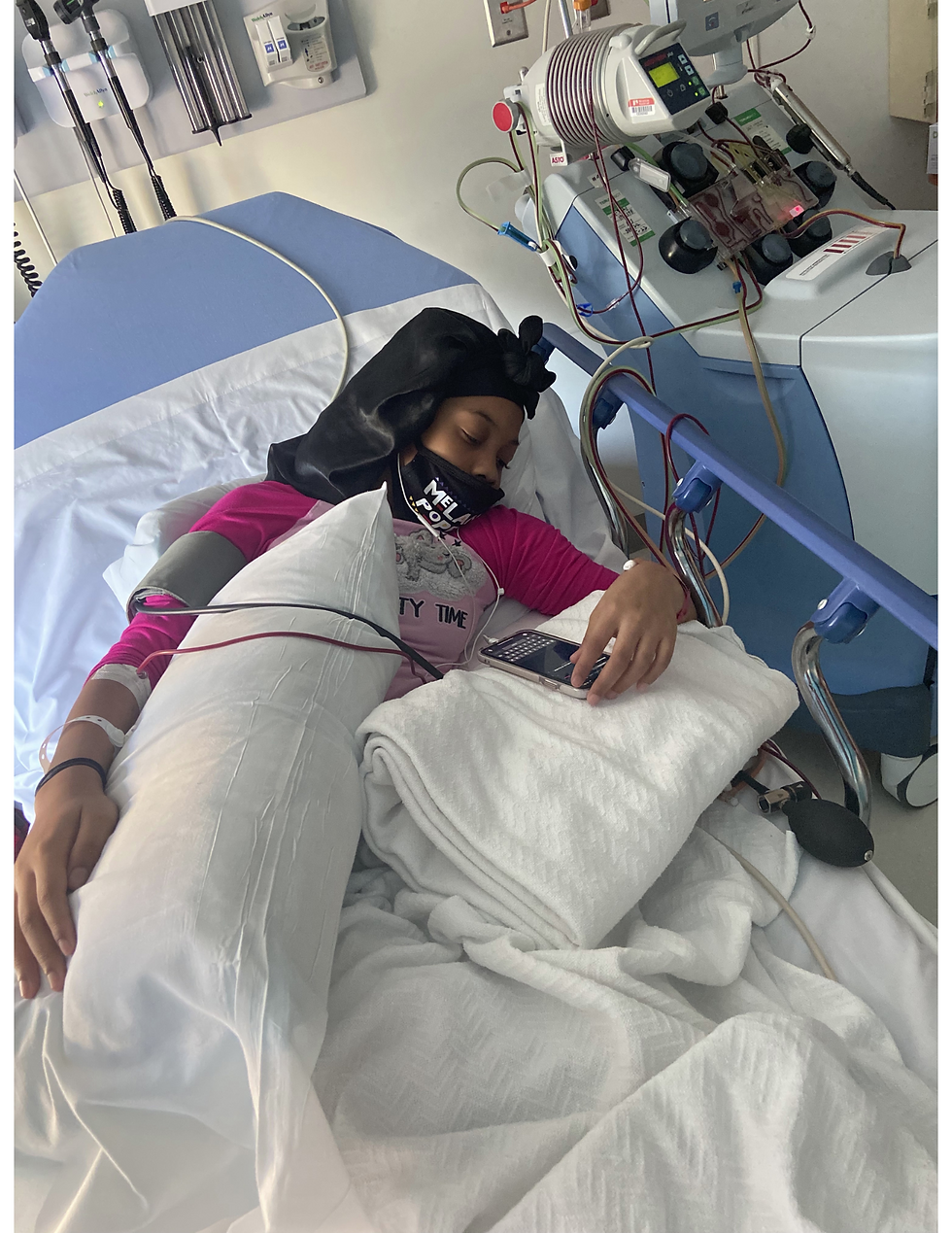Sickle Cell Anemia & Your Child
- thescak
- Jul 10
- 3 min read
Sickle Cell Disease is a genetic gene mutation causing hemoglobin abnormalities (inherited blood disorder making red blood cells misshapen). It is inherited when a child gets a sickle cell gene from both parents. A child with one sickle cell gene is healthy, but he or she is a carrier of the disease (SCT). There is a greater chance for having a child with SCD when both parents have SCT. Once parents have had a child with sickle cell disease, there is a 1 in 4 chance that another child will be born with sickle cell disease. There is also a 1 in 2 chance that a child will be a carrier, like the parents. Having a family history of SCD increases a child’s risk for the disease.
If one parent has sickle cell trait and the other does not carry the sickle hemoglobin at all (no SCD or SCT) then none of the children will have sickle cell anemia. In this case there is a 50/50 chance of having a child with SCD.
What Are The Symptoms?
Most children with SCD will start to have symptoms during the first year of life, often around 5 months.
Symptoms may vary from mild to severe and include:
Anemia. A common symptom, having fewer red blood cells can make your child pale and tired.
Yellowing of the skin, eyes, and mouth (jaundice). A common symptom, sickle cells die faster than the liver can filter them out. The yellow color is caused by too much bilirubin that is released when the red blood cells die.
Pain crisis, or sickle crisis. Sickle cells can easily get stuck in small blood vessels. This blocks blood flow and causes pain. The pain can be anywhere, but most often occurs in the chest, arms, and legs. Babies and young children may have painful finger and toe swelling. Blocked blood flow may also cause tissue death.
Acute chest syndrome. This is a pain crisis in the lungs, when sickle cells stick together and block oxygen flow. This can be deadly. It often occurs suddenly, when the body is under stress from infection, fever, or fluid loss (dehydration). It looks like pneumonia and can include fever, pain, and a violent cough.
Splenic sequestration (pooling). This is a pain crisis in the spleen, where sickle cells stick together, it becomes enlarged and causes a drop in hemoglobin. It can be deadly if not treated at once.
What do you mean they 'stick together'?

The symptoms of SCD may look like other disorders or health problems. Always see your child's healthcare provider for a diagnosis.
How Do I Know?
As of 2026, ALL states, as well as Washington D.C., Puerto Rico, Guam, and the U.S. Virgin Islands check newborn babies for abnormal hemoglobin as part of routine newborn screening tests. (https://www.ncbi.nlm.nih.gov/books/NBK566461/)
Your family history, your child's medical history, and a physical exam are all included in the diagnosis. If the screening test shows indicators of SCD, a blood test called hemoglobin electrophoresis may be done. This will be able to tell you if your child has SCT or SCD and which type.
What Can I Do?
Treatment depends on the child’s symptoms, age, general health, and the severity of the condition.
Early diagnosis is important in treating this disease. Your child's healthcare provider will refer you to a hematologist, a doctor in blood disorders, as well as other specialists.
Treatment may include:
Pain medicines. To manage pain crises.
Water. Drinking plenty of water daily (8 to 10 glasses) helps prevent and treat pain crises.
Blood transfusions. These are used to treat multiple symptoms as well as to prevent stroke.
Eye exams. Yearly eye exams should be done to screen for an eye condition called retinopathy.
Folic acid. Helps prevent severe anemia.
Vaccines and antibiotics. To prevent infections.
Stem cell transplant. Talk to your healthcare provider about this option.
Hydroxyurea. This is a cancer medication that can reduce complications, hospital stays, and pain crises. As with all medication, there are side affects. Talk to your healthcare provider about this option.

Sickle Cell Disease is a serious condition. If you are unsure of your child's status request a blood test. If your child presents with any of the listed symptoms, please contact your health provider or seek help at the nearest emergency room.
.png)

